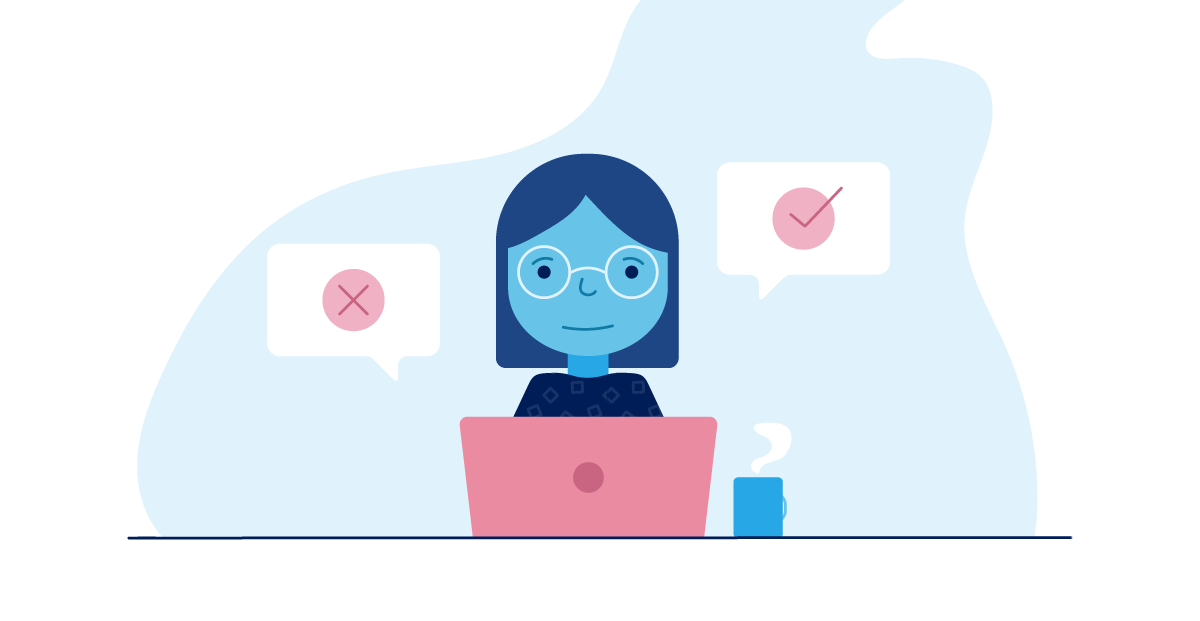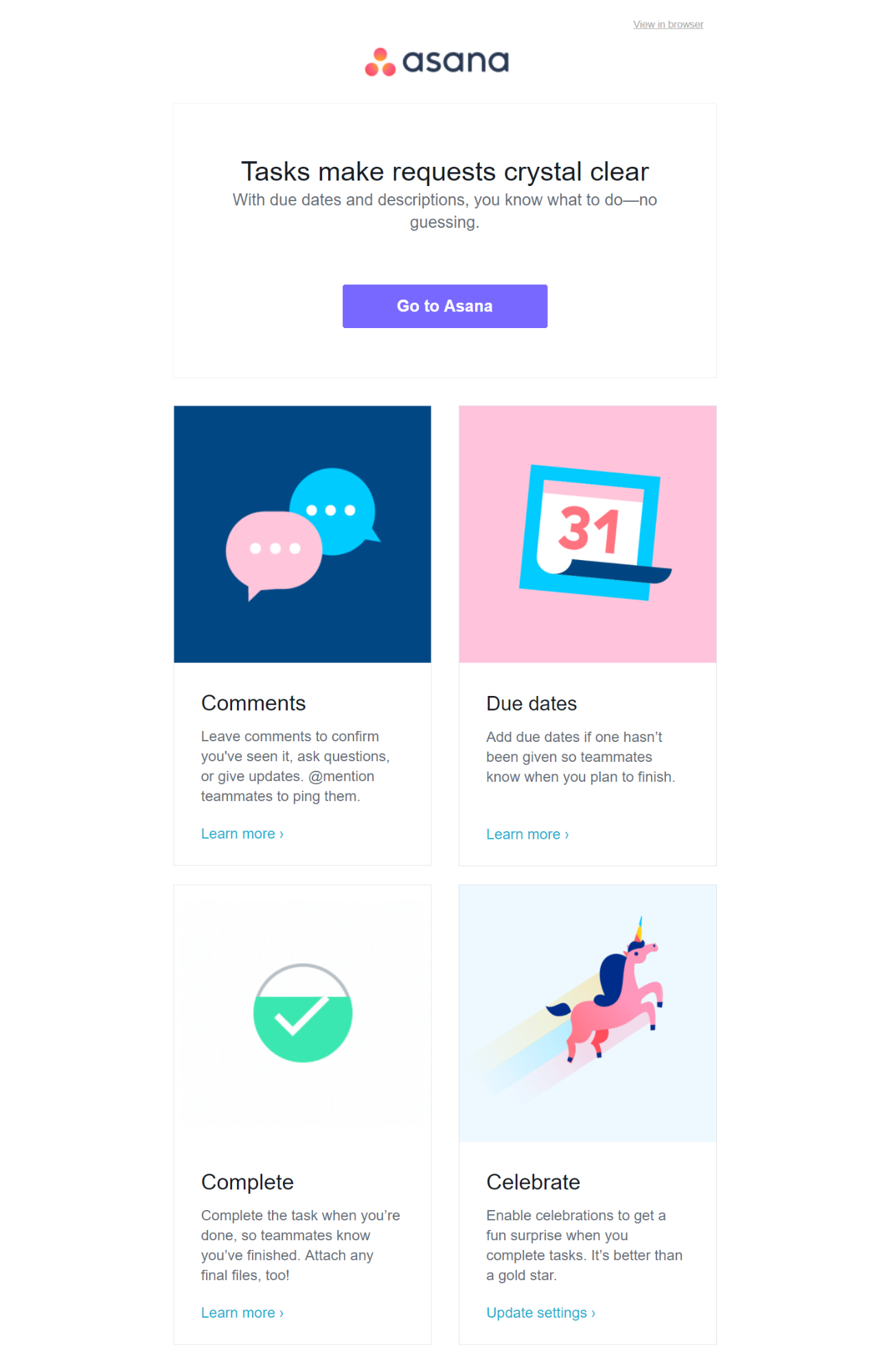More customers.
If you ask most marketers how to grow a business, that’s what they’ll tell you.
And there’s no reason to doubt the answer. It makes sense: As more people buy your product or subscribe to your service, the bigger you’ll become.
Increasingly, though, marketers and business owners are discovering the best way to grow isn’t to emphasize customer acquisition, but instead, customer retention.
What is customer retention?
Customer retention is a technique that emphasizes keeping customers once they buy. Using customer service methods, surveys, activation tactics and more, the goal of customer retention strategies is to hold on to as many customers as possible for as long as possible.
As more businesses start to realize the revenue-boosting effect of loyalty, more marketers are prioritizing customer retention over acquisition. Here are just a few examples of its power:
- Just a 5% increase in customer retention can boost a business’s profits by 95%.
- It’s up to 65% easier to sell to an existing customer than to a new one.
- Loyal customers are worth up to 10x their original transaction.
But why? How could it be more profitable to keep customers than earn them?
Why are customer retentions strategies so impactful?
To answer that, all you have to do is think back to a bad customer experience: when you bought a product that didn’t meet expectations, or when a service agent treated you poorly. You probably:
- Not only didn’t recommend the product, but went out of your way to share your poor experience with friends and family.
- Stopped using the product or service.
- Never considered purchasing the brand’s products or services in the future.
Then, think back to an outstanding one: when the product exceeded expectations and you were treated like more than just a number. You probably:
- Recommended the product or service highly to friends and family.
- Continued using the product or service for as long as you could.
- Remained loyal to the brand that treated you well.
- Considered purchasing more of the brand’s products and services.
The “you” in this second scenario is the customer you’re trying to cultivate as a marketer. It’s the customer that not only buys your products and services, and continues to buy more of them -- but the customer that advocates on your behalf.
When you really get down to it, prioritizing customer retention doesn’t mean ignoring customer acquisition. It means repeatedly delighting current customers, and letting them eventually become your marketers (by helping with acquisition by referring customers) at the bottom of the demand generation marketing funnel (or, hourglass as newer models suggest).
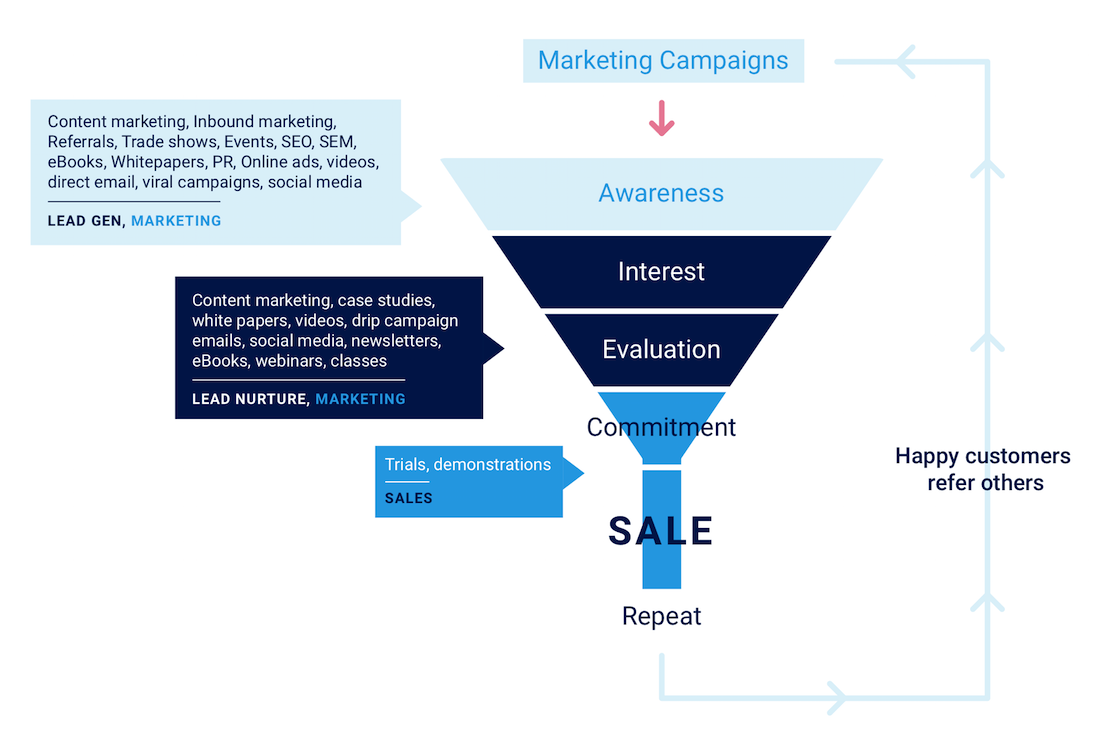
Here are some easy customer retention strategies that you can implement today to start boosting loyalty:
Easy customer retention strategies with examples
As ad prices rise and the cost of acquiring customers rises with them, marketers are realizing that delighting current customers is not only the right thing to do ethically, but it’s the most cost-effective way to grow sustainably. Here are a few customer retention strategies you can use to do that, along with some examples of how to implement them from brands that do it right.
Ensure your customers don’t feel like a wallet with a nervous system
We live in the information age and marketers have more information than most everybody else. So why don’t they use more of it to show their appreciation?
Name, email address, location, birthdate: They’re just a few of the things used to segment lists to send relevant offers via email. Marketers use them to get people to buy, but why not for something more human?
If you know your customer’s birthday, send them a happy birthday email! If you know they live in a location struck by natural disaster, send them safety resources and well-wishes.
Behind every brand is a team of humans, and it’s important to take off your sales hat every once in a while and treat your customers with the humanity they deserve. Here’s an email from Navy Federal that doesn’t attempt to sell anything -- no discounts, no upgrades, no add-ons. It’s simply an email to say “Happy Birthday.”
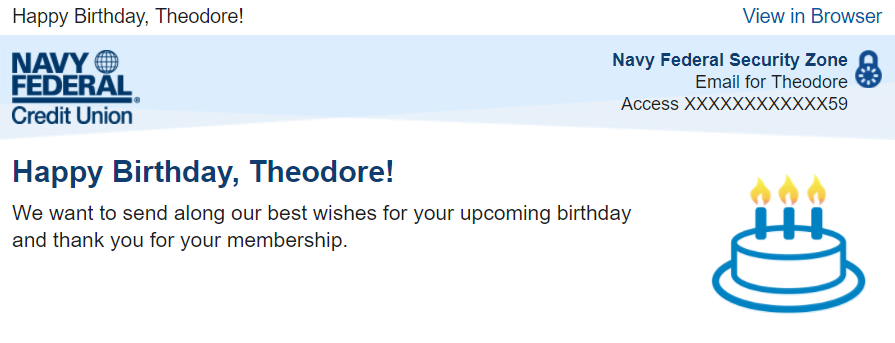
Offer ACTUAL personalization
“Offer personalized experiences” is written in countless marketing blog posts, yet a lot of teams still aren’t getting it. Personalized means more than a first name in an email. It means more than sending location-based messages about offers in the area.
Real personalization is about making sense of behavioral data and using it to improve the user experience. For example, if one of your customers routinely ignores your emails about podcasts but clicks through emails about ebooks and tip sheets, it could be because they prefer reading content to listening. Send them more written content.
Today’s marketing automation tools allow you to create complex personalized journeys from customer data with behavioral triggers that operate in an IFTTT fashion: If they click here, send them an email about this. If they click there, send them an email about something else. If they sign up, send them these onboarding emails specific to the plan they chose. Here’s a great example from Asana, which sends its users this email after they’ve been assigned a task:
Align yourself with meaningful causes
Today’s consumer doesn’t just want a brand to buy from. They want a partner, friend, trusted authority that cares about more than revenue. You can become all three of those by aligning yourself with causes that your customers are passionate about.
Keep in mind, any attempt to win over your customers by donating to a random cause may have the opposite effect. Any charity or organization or person you align yourself with should have at least some relationship to your brand.
Here’s how payment processing service, PayPal, used this piece of advice to its advantage on International Women’s Day:
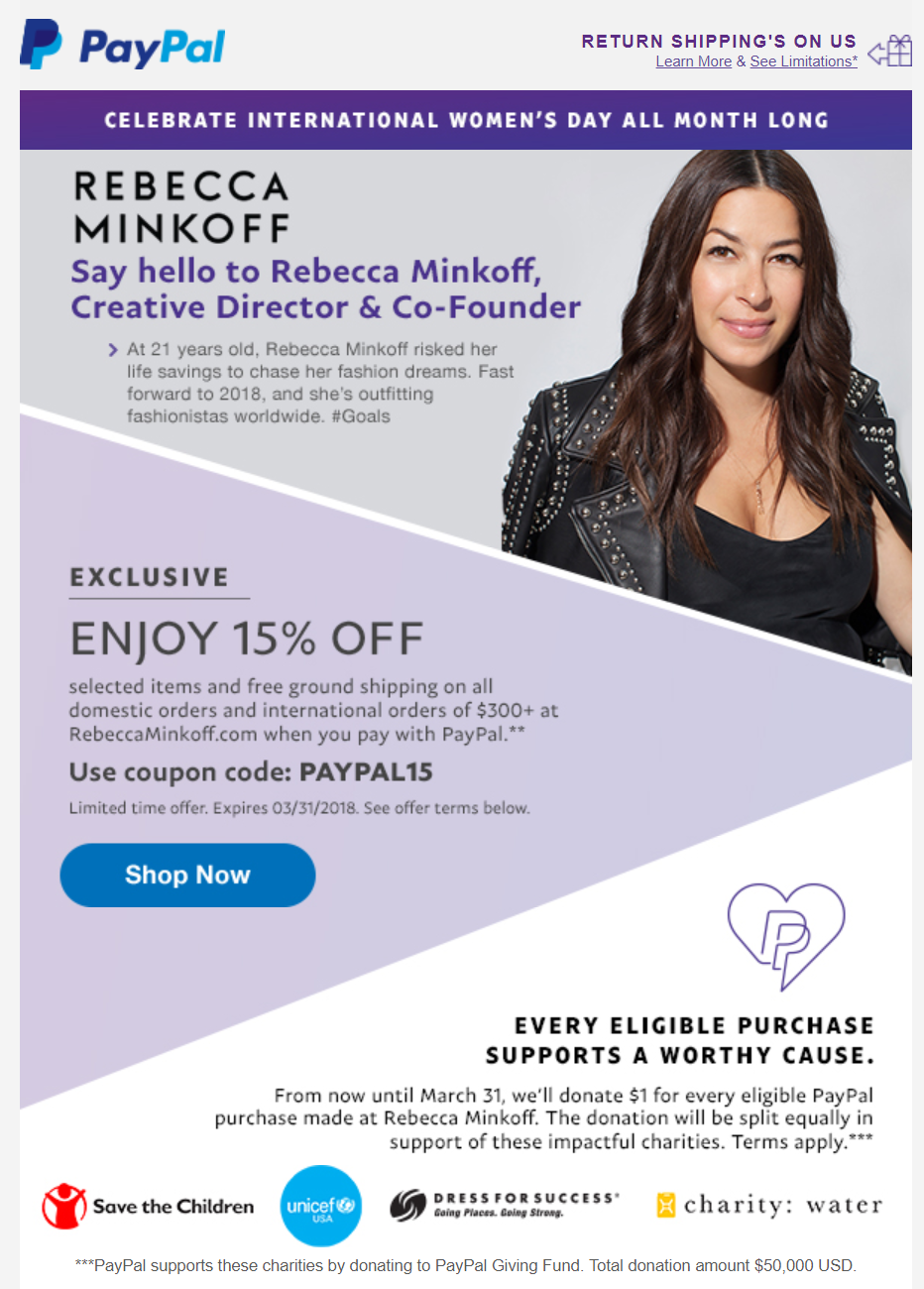
S.O.S: Send out savings
What’s maybe the best way to convince customers to upgrade to your premium tier offering? To get them to spend on another product? Give them a discount. This method’s been working since the dawn of advertising. Here’s an example from AAA:
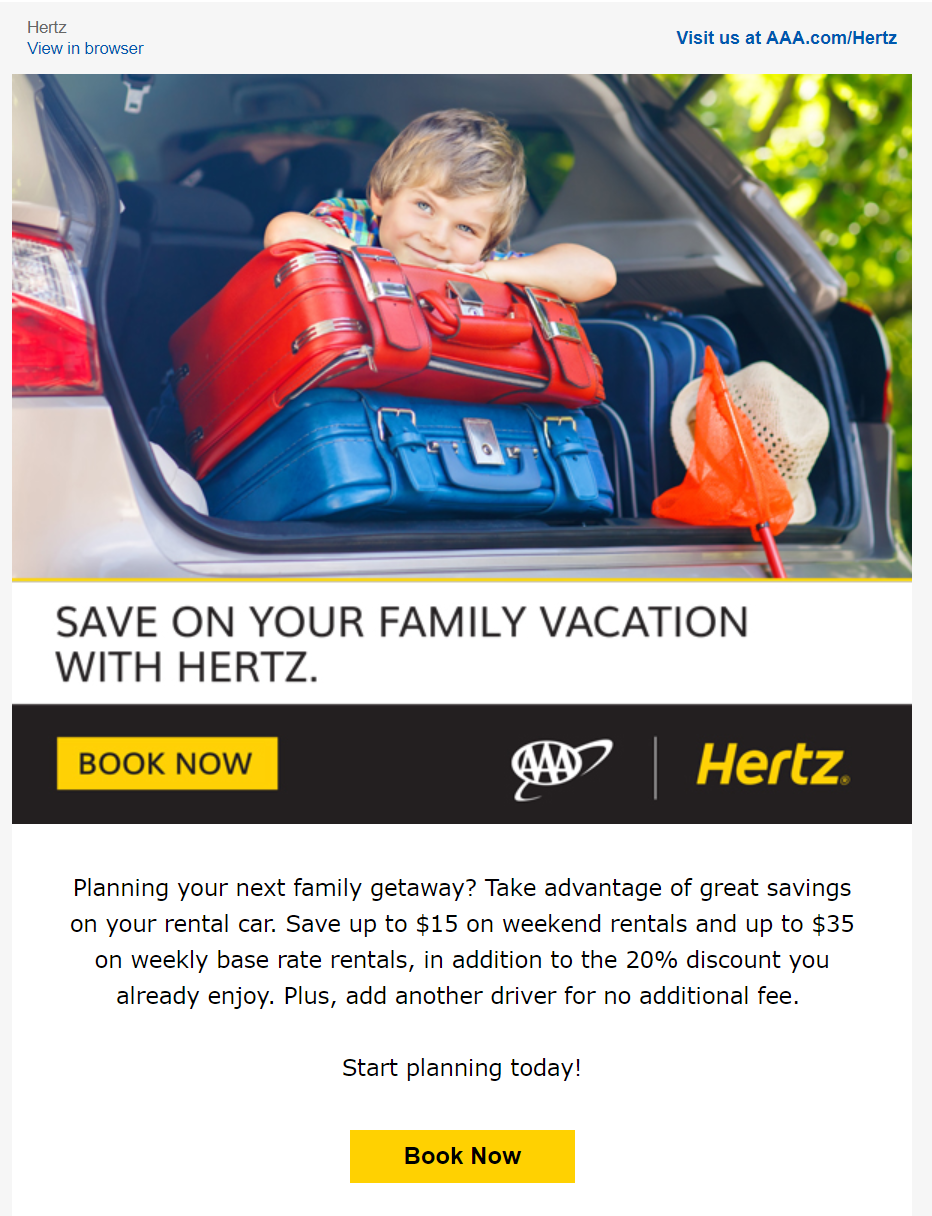
Send reactivation emails
Every business has those old email lists filled with inactive customers -- those who bought your product or subscribed to your service, but are no longer engaging with anything you send them. You’ve tried using all kinds of content, products as bait...but no bites.
Time to purge, right?
Not before one last reactivation campaign. After all, research has shown that sending emails to current customers can deliver a return of $28.50 for every dollar spent. That’s nearly half the high cost of acquiring a new customer -- $55.24.
Campaigns like these aim to wake customers back up with a unique offer and/or well-written copy that stands out in the inbox. Here’s an example from us at BuySellAds:
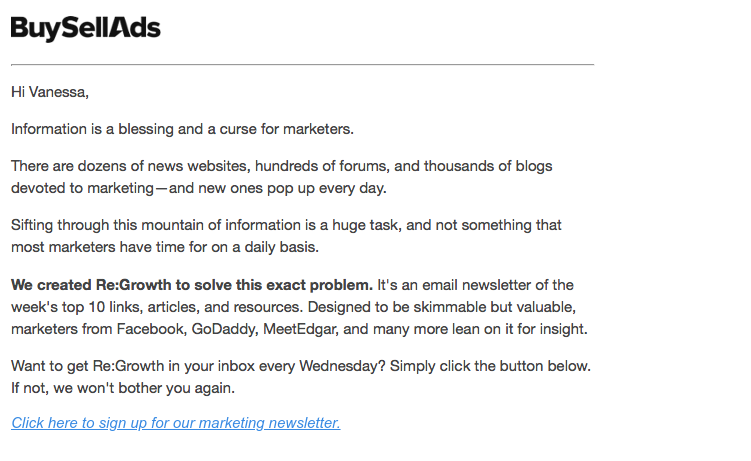
Here’s another great example of a reactivation email from Money Dashboard, which used the subject line “Please Put Us Out Of Our Misery” to get opens. And here’s a look at a reactivation campaign that Instapage used to generate $30,000 in recurring revenue from 55,000 stale database contacts.
Request feedback
Too often businesses develop customer retention strategies based on what they believe their customers want. The trouble is, you are not the customer. Your copywriter is not the customer.
The customer is the customer. So ask them how you’re doing. Ask them what they want to see more of, less of, from you.
Net Promoter Score can be a great indicator of customer satisfaction, but think beyond narrow measures like surveys. Engage with customers on their favorite social networks. Talk to them on the phone. Try following Trello’s lead by creating a web page where customers can comment and suggest changes on your product or service.
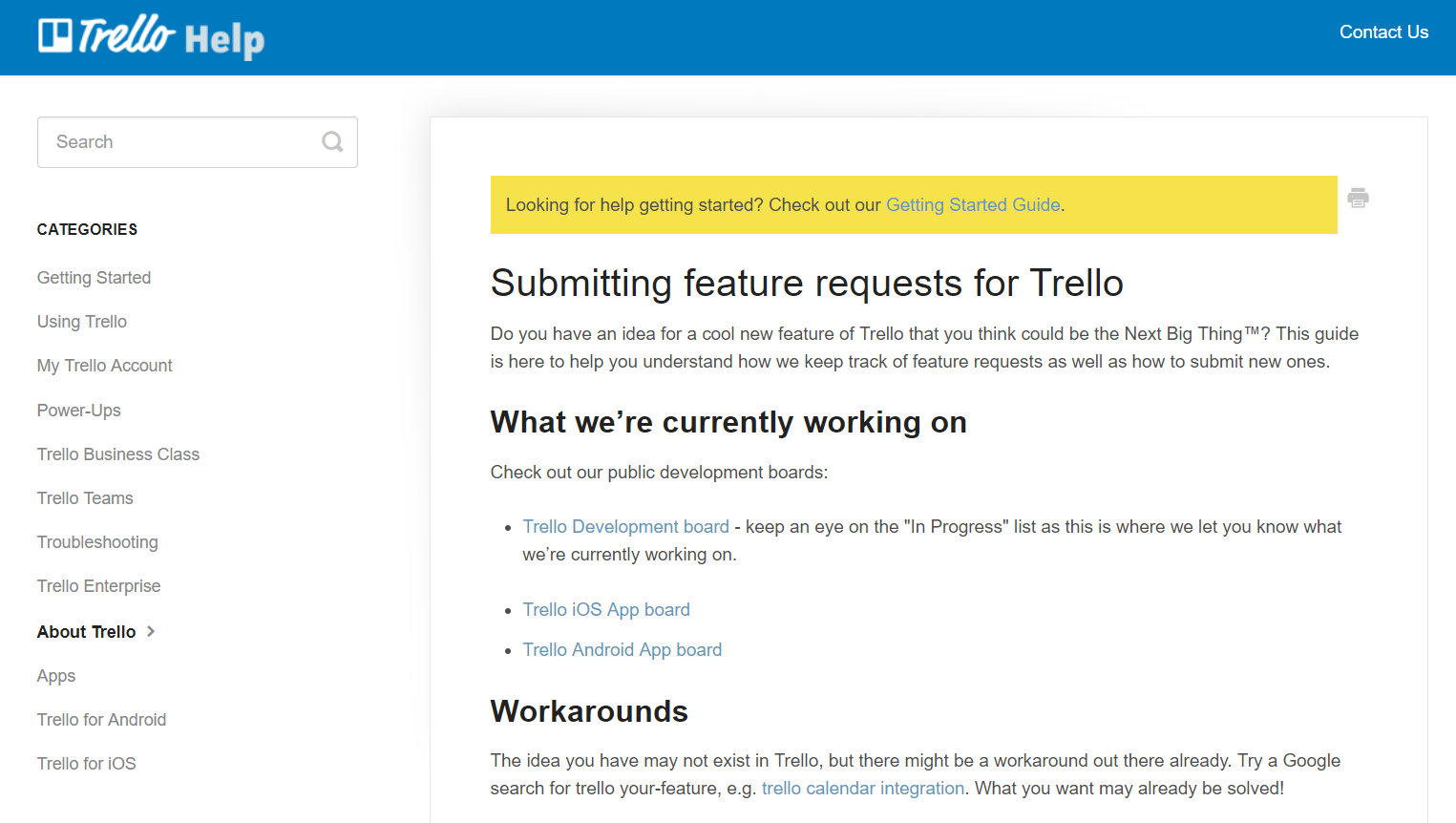
Upsell and cross-sell
When your customers buy from you, most of the time they start small. Popular plans and products aren’t usually big-ticket. So as a team, you have to do the work involved in getting them to spend again.
In many cases, that work involves keeping them happy. However, sometimes it’s simply a matter of keeping them informed of new offerings and add-ons.
Cross-selling is selling a product or service that’s related to the product your customer currently owns. Here’s an example from UHAUL:
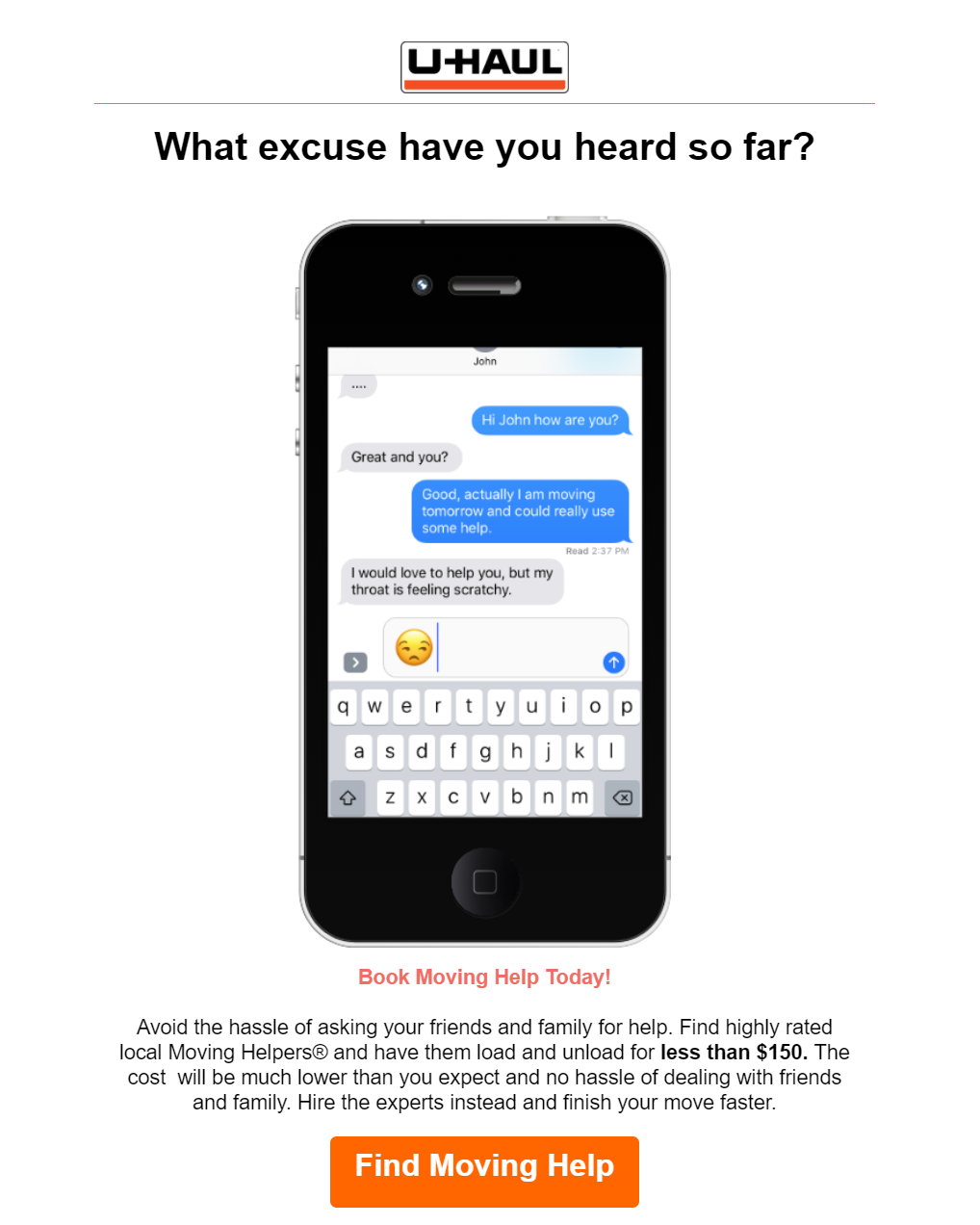
Upselling is about offering an improved version of the product or service your customer owns. Airlines are known for upselling when you purchase a ticket for a trip. Do you want to upgrade to first class? Do you want to skip security lines? Do you want to board first and bring an extra carry-on? These are all examples of upgrades that improve the basic offer.
Make sure your customers are using your product or service to its fullest
You know what’s a shame? When customers abandon your product or service because they’re unaware of what’s available to them.
This is where continuing customer education comes into play. Onboarding, support, and product use cases are all crucial here. You want your customers to know all the things they can do with your product or all the things their membership entails.
Onboarding should be simple but comprehensive. Thank your new customer for signing up and give them all the basics, but make sure they have the option to go more in-depth should they please. Then, ensure product and service education continues throughout your relationship.
If your premium membership includes exclusive webinars, then make sure you’re sending out emails about when your exclusive webinars are. If your product has uses your customer may not have thought of, turn those use cases into an ebook or blueprint. Here’s a great example from Moz that shows what happens when you educate your customers fully: They can educate each other.
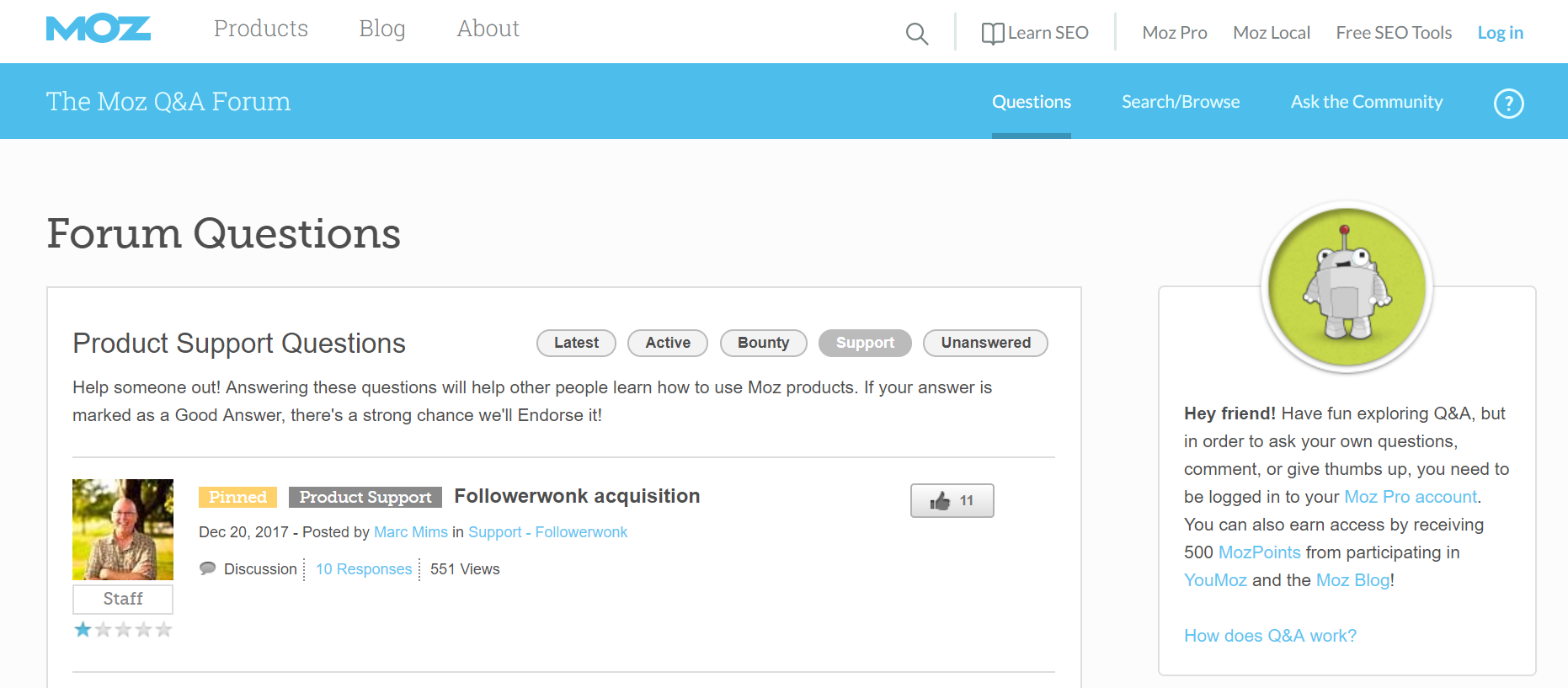
Customer retention strategies will keep your business growing
Customer acquisition strategies will help you earn customers, but not keep them. Customer retention strategies, on the other hand, can do both.
If you focus on making sure your customers are happy and informed, customer acquisition will practically take care of itself. So start implementing these strategies to grow your business and keep it growing.


